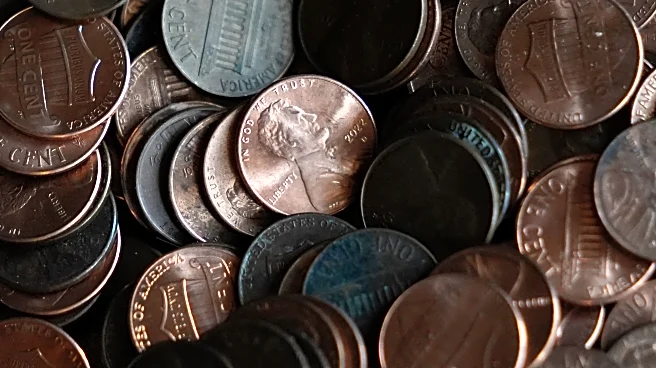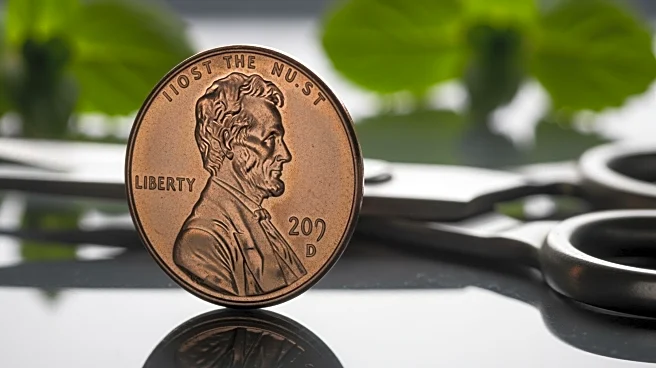What's Happening?
The U.S. Mint in Philadelphia has pressed the final penny, ending production of the 1-cent coin after more than 230 years. The decision to discontinue the penny was driven by its high production cost, which exceeds its face value. Billions of pennies
remain in circulation and will continue to be legal tender, but new ones will no longer be made.
Why It's Important?
The end of penny production marks a significant shift in U.S. currency policy, reflecting changing economic realities and cost considerations. The move is expected to save taxpayers millions of dollars annually. The decision may influence consumer behavior and retail practices, as businesses adjust to the absence of the penny in transactions.
What's Next?
As the penny is phased out, businesses and consumers will need to adapt to new pricing and transaction methods. The government may provide guidance on handling transactions without pennies, and retailers may implement rounding practices. The situation may prompt discussions on the future of other coins and currency denominations.
Beyond the Headlines
The discontinuation of the penny raises questions about the cultural and historical significance of currency. The decision reflects broader economic trends and technological advancements in payment systems. Additionally, the move may influence public perceptions of government efficiency and resource management.
















